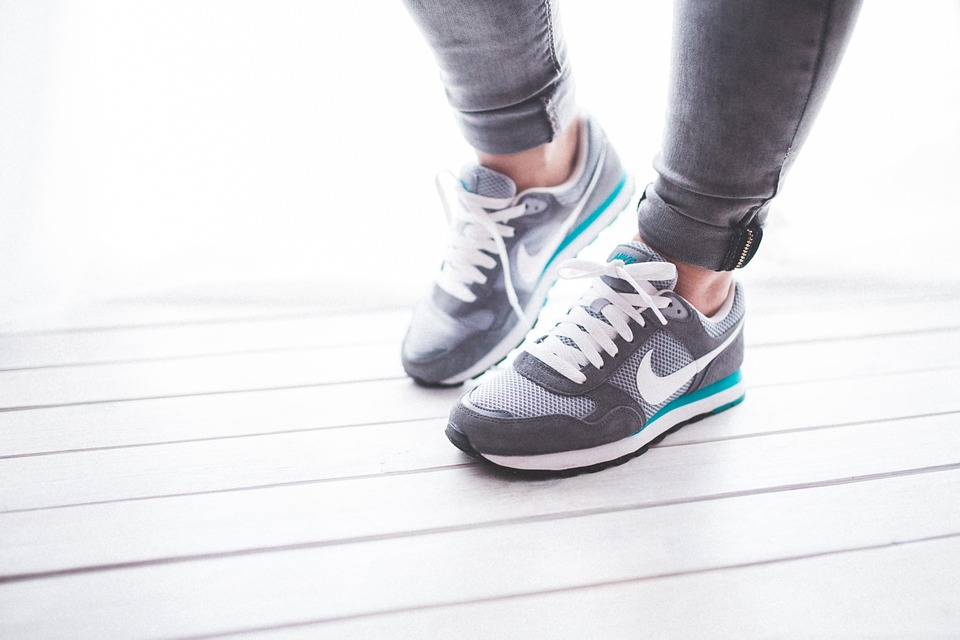Whilst most runners train by, well, running, there's a lot more to improving endurance and muscular strength.
Strength training is fast becoming a popular choice for runners, thanks to the variety of exercises that combine to strengthen, tone and provide better stability for the legs.
For regular runners, strong leg muscles put less pressure on the joints, reducing your risk of injury. And for sprinters, leg exercises that promote strength can have a huge impact on those explosive starts and faster finish times.
Combining running with strength training exercises in the gym will help to make you a stronger and faster runner. So it's no surprise that endurance athletes incorporate strength training as part of their overall fitness plan.
We take a look at the top four running exercises for runners at home and running workouts to perform in the gym to enhance and improve their running performance.
1: Squats
Great for: Quads, hamstrings, glutes, calves, and core.
Squats work all of the core muscles in the legs, activating the areas crucial for speed and endurance whilst running. By incorporating squats into your strength training regime, you'll run faster on the flats, power up those climbs and strengthen the legs for a better stride.
Working the quads also helps to stabilise the knees, absorbing the impact of each landing as you run. This in turn helps to avoid injury, resulting in a smoother glide and reduced joint pain.
Ready?
- Stand with your feet shoulder-width apart.
- Point the toes slightly outward whilst keeping your back straight.
- Place a bar of a comfortable weight on the back of your shoulders.
- Slowly squat down until your thighs are parallel to the ground, maintaining good posture with a straight back.
- Return to the starting position.
Repeat eight reps per set.
2: Deadlift
Great for: Hamstring, glutes, core, lower back, forearms.
A great way to strengthen the hamstring, glutes, and back, deadlifting can help runners to improve posture, which is crucial for preventing injury and aiding uphill climbs.
Ready?
- Place your feet beneath the bar, with your feet slightly less than shoulder-width apart.
- Point your toes outwards and keep the bar close to your body to maintain balance.
- Grab the bar with an overhand grip and lift while keeping your lower back slightly arched.
- Activate your glutes by squeezing as you stand upright.
- Lower the bar slowly by pushing your hips back and bending the knees as you return to start.
Repeat six reps per set.
3: Walking Lunges
Great for: Quads, glutes, hamstring and calves.
Walking lunges are great for runners as they mimic the act of running and help train the body to accelerate forwards at a quicker pace. Walking lunges also help to improve co-ordination and balance. Use a dumbbell whilst you lunge for extra resistance.
Ready?
- With a dumbbell in each hand, start by stepping forward with one leg, lowering your leg to a 90 degree angle with the floor.
- Push back up and stride out with the other leg, pushing the knee forward and keeping the quads parallel with the floor.
Repeat 10 reps per leg.
4: Calf Raise
Great for: Calves
Calf raises are great for strengthening the muscles to prevent fatigue, especially during uphill runs. Stronger ankles also help to increase stride length and reduce the risk of injury.
Ready?
- Stand on your toes on the edge of a step, heels hanging off the back.
- Lift your heels as you rise onto your tip toes, and hold for a few seconds to feel the stretch in your calves.
- Slowly lower the heels down to the starting position.
Aim for 15 to 20 reps per set.
Workouts For Runners
For the best workout for runners at home, which will not only improve your strength but also your endurance, perform these exercises as a circuit. Simply set up your stations either at home or in the gym, with a barbell and set of dumbbells at a weight of your choice, and get ready for a workout that will not only build your strength, but also help improve your endurance, stability and resilience.
Ready?
- Squats - Repeat for 8 reps.
- Deadlift - Repeat for 6 reps.
- Walking lunges - Repeat for 10 reps per leg.
- Calf raise - Repeat for 15 - 20 reps.
Allow up to 1 minute rest periods between exercises for recovery and repeat for as many sets as you think your body can handle.
Want a challenge?
Reduce your rest periods by 30-45 seconds between exercises to put your cardiovascular system to the test.
Going Long Distance?
Take a look at our marathon training tips and get started on training for one of the biggest marathon events this year...
- MK Marathon Weekend- Milton Keynes- 2nd May
- Midnight Mountain Marathon - Brecon Beacons - 4th June
- The Wales Marathon - Pembrokeshire Coast - 3rd July
- Richmond Marathon - London - 11th September
- London Marathon - London - 2nd October
- Kielder Marathon Weekend - Northumberland - 2nd October
- Loch Ness Marathon - Scottish Highlands - 2nd October
FAQs
Do runners need the gym?
Strength training should be an essential part to your workout routine if you’re looking to improve your running performance, as it strengthens the muscles and joints used when running. The focus is not on lifting heavy and getting big, strong and muscular but to build your resilience and decrease the risk of injury.
What are the best leg exercises for runners?
Light strength exercises like squats, deadlifts, calf raises and lunges are perfect if you're wanting to improve your race times and performance whilst running. To see maximum benefits it is recommended to perform these exercises as a circuit, with regular rest periods between exercises, to target all muscle groups and build resilience.
Are squats and lunges good for runners?
Leg workouts for runners, such as squats and lunges, are extremely beneficial. These exercises can improve your knee stability, leg power and body awareness, which is essential for preventing injury when running on uneven terrain.
What gym equipment is best for runners?
Whilst performing running gym workouts you don’t need to smash out daily leg sessions lifting twice your bodyweight, if that isn’t for you. Power moves like this may come in handy if you’re a sprinter, but as an endurance runner you would want to focus more on increasing your endurance and fatigue resistance. We would recommend cardio equipment like a treadmill, elliptical and cross-trainer, and free weights that will push you but not break you.
What exercises improve running speed?
If you’re looking for exercises to run faster at home, introducing core workouts, strength building and variances into your running workouts is a great way to improve running speed. Try speed sessions such as 1 minute sprints, followed by 2 minutes walk or light jog, then repeat, and long runs, each session aiming to add up to 10% on your previous distance.


